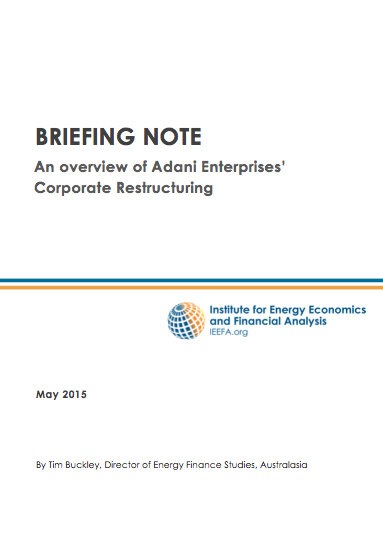Adani’s Restructuring Turns Its Australian Coal Project Into Collateral Damage
We published a report today that analyzes the effects of the recent corporate restructuring of Adani Enterprises, the Indian company that has proposed building what would be one of the biggest coal mines in the world, in northern Australia.
Our conclusion: Adani’s move is a strategic one that enhances overall shareholder value by better aligning the company’s parent outfit, Adani Group, with minority shareholders and with new opportunities emerging in the Indian electricity sector transformation.
From a strictly coal-industry point of view here’s what else it does: it effectively turns the company’s Carmichael coal project proposed for the Galilee Basin of Queensland into collateral damage.
It was probably inevitable.
Seaborne coal markets have undergone deep structural changes over the past few years as supply has exceeded demand. And India — for whom the Galilee endeavor was supposed to provide an endless supply of coal — has very recently moved to modernize its electricity sector by adopting a national policy that has a stated objective to now eliminate any need for foreign coal.
Adani’s coal holdings in the Galilee Basin had already become a stranded asset. The project is financially handicapped by lacking about $2.8 billion in financing for the first stages of construction. That figure includes backing for the coal mine itself, for related equipment and for a 150-megawatt power station to support the project. The company also needed $2.7 billion in financing for a rail line and locomotives.
Its restructuring—which reduces Adani Enterprises’ market capitalization from $11.8 billion to $2.5 billion—means its odds of attracting financing for the Australian proposal are that much more remote.
To Adani’s credit, it is focusing now on two new solar-energy proposals that will cost $9 billion, and it is pursuing a strategy that is much more in with ambitious targets outlined by Indian Energy Minister Piyush Goyal.
Goyal seeks to transform India’s electricity sector over the next few years, including by adding 175 gigawatts of renewable-energy installation by 2022, modernizing its electricity grid to the tune of $50 billion, and perhaps tripling its domestic coal production.
As India sees it, it doesn’t need foreign coal.
As momentum builds, the Indian electricity market will rapidly shift toward a significantly higher reliance on renewable energy and energy efficiency. It’s a sensible move, because, renewable energy plants and energy-efficiency initiatives have an almost zero marginal cost of production. They work in effect to undermine coal-fired power plants, which have a high marginal cost of production.
India’s energy sector is rapidly transforming, and Adani’s restructure is enabling the company to change with it. The company is simply realigning its strategy so that it can benefit from the opportunities created by a long-term economic growth transition, underpinned by lower-carbon, less-pollution intensive development.
Tim Buckley is IEEFA’s director of energy finance studies, Australasia.

















